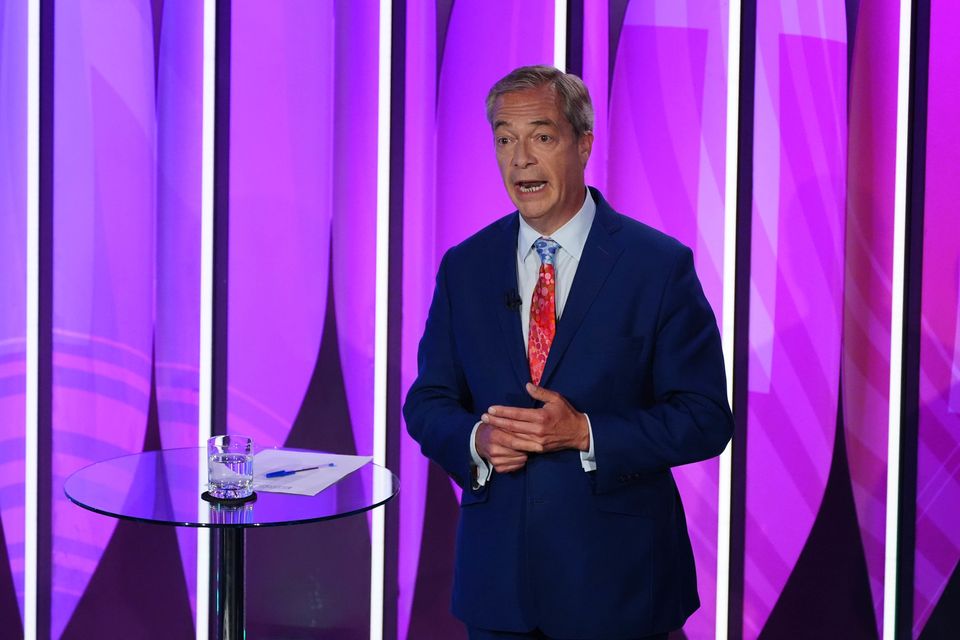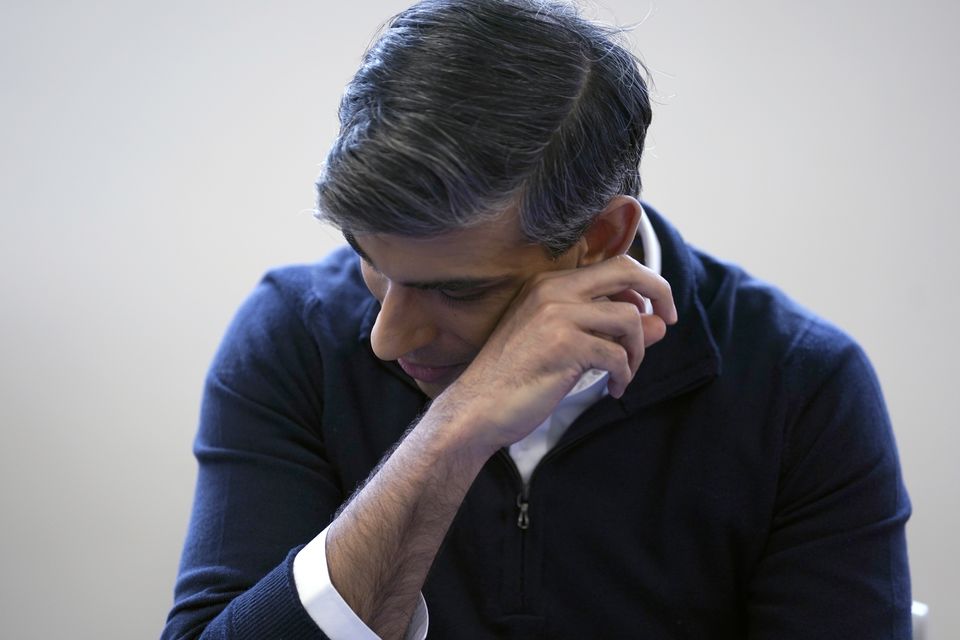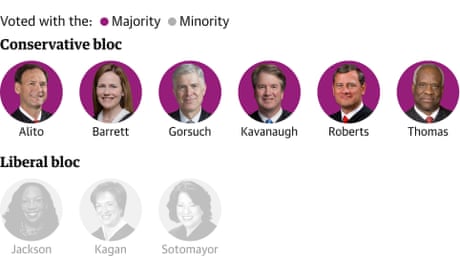He made the comments on Question Time

The leader of the hard-right Reform UK party Nigel Farage appeared on a special edition of BBC Question Time tonight, facing questions from a live studio audience in Birmingham.
One of the questions put to Farage was how his party would enact its pledge to return migrants crossing the English Channel in small boats to France. In an extraordinary moment, Farage threatened to use the Royal Marines to do so.
He said: “Well we have something called the Royal Marines if it comes to it,” to audible gasps from the audience, before going on to say “we won’t need to do that.”
Farage went on to say that the UK should leave the European Court of Human Rights and ban anyone who crosses the Channel from getting refugee status.
‘He IS the far right of politics’ – The response to Nigel Farage’s Question Time appearance
"Farage tries to blag his way out of responsibility for his every action"
Reform UK leader Nigel Farage appeared on the BBC Question Time leaders special this evening.
On the show, he faced a tough grilling from the studio audience about his party’s candidates, his views on migration and his general election campaign.
His appearance has triggered a critical response from people watching.
Former Green Party MP Caroline Lucas slammed Farage as being the ‘far right of politics’ during his performance. That was in response to him claiming to have worked to drive the far right out of British politics. She tweeted: “Did Farage really just say that ‘I’ve done more to drive the far right out of British politics than anyone else alive’ – he IS the far right of politics”.
Alastair Campbell – the man who was once Tony Blair’s comms chief and now hosts a podcast – accused Farage of going ‘full Trump’ in his response to the revelations about Reform UK activists making racist comments. He tweeted: Farage going full Trump … the deep state is at it, setting up actors to work with Channel 4 to damage poor Nige … and the establishment is all ganging up on him.”
Meanwhile, Plaid Cymru’s Liz Saville Roberts accused Farage of trying to ‘blag his way out of responsibility’ for his actions. She tweeted: “Farage tries to blag his way out of responsibility for his every action: His licence for public bigotry, his Brexit failures, his plan to destroy the NHS, his apologies for Putin’s atrocities. He’s a laughing stock”.
Chris Jarvis is head of strategy and development at Left Foot Forward
https://www.taxresearch.org.uk
I watched the Question Time election special last night. Having previously given half hour slots to the leaders of Labour, the Tories, SNP and LibDems, Farage had demanded the same from the BBC. So they gave him what he wanted, and made him share the slot with Adrian Ramsey, co-leader of the Greens.
Ramsey went first. He was coherent, charming, and engaged with the audience. He tried, more than any other politician I have heard in this election, to answer the questions put to him. He dealt as well as could be hoped by his party with questions on their rogue candidates. The nuclear defence question was turned to his advantage. It was clear he had won the audience.
This was his biggest test, and he passed it. I thought Carla Denyer, his co-leader was the better of these two in the media, but Ramsey proved he could hold his own.
And then the audience were let loose on Farage, and they did not spare him. Almost every question accused him of racism. His dislike of migrants was called out time and again. He was made to look like the bigot he is. And when other issues were raised, it was scornfully. One questioner even compared him to Adrian Ramsey, saying the Green offered hope and Farage only offered fear. He had no clue how to respond. It was as if he had been laid bare in public view.
It was some of the best Friday night television I had watched for some time. I said so on Twitter. The reaction, and number of reads, suggests that people agreed.

So, where was Fiona Bruce? Sticking the boot in, as far as I could see. She's clearly not forgiving Farage for the damage he is doing to the Tories.
Rarely has a man looked so reviled on television.
It was good to see that so many have truly rumbled him.

Reform UK Leader Nigel Farage refused to apologise (PA)
By Claudia Savage, Piers Mucklejohn,
Prime Minister Rishi Sunak has said “racism stings” in response to a slur used against him by a Reform UK canvasser, which Nigel Farage has refused to apologise for and denounced as a “political set up”.
Campaigners for Mr Farage’s party Reform UK were recorded making racist comments, including about the Prime Minister who is of Indian descent.
The footage, made by an undercover Channel 4 reporter, showed Reform campaigner Andrew Parker using the racist term about Mr Sunak and suggesting migrants should be used as “target practice”.
Another canvasser described the Pride flag as “degenerate” and suggested members of the LGBT community are paedophiles.

Reform UK Leader Nigel Farage speaks during a BBC Question Time Leaders’ Special at the Midlands Arts Centre in Birmingham (Peter Byrne/PA)
During a written Q&A from users on parenting forum Mumsnet, Mr Sunak was asked: “Do you think Nigel Farage is racist?”
The Prime Minister replied: “Racism stings. I’ve experienced it in the past and I’ve spoken about this recently.
“But I’m also your Prime Minister running the country two generations after my grandmother emigrated here, leading the most diverse Cabinet in history, and the fact that neither of these things are a big deal tells you Britain is a great country and we have lots to be proud of.
“With regards to Farage, I won’t put labels on people, but I will call out blatant racism when I see it, and there are clearly deep, deep problems in the party he leads.
“To know my girls may have heard their dad be called a “f****** P***” by someone campaigning for Reform is shocking. We are better than that as a country.”

Prime Minister Rishi Sunak during a visit to Holy Trinity Rosehill CE Primary School in Teesside (Danny Lawson/PA)
During his stint on Question Time, Mr Farage repeated claims that Mr Parker is an actor and he described the expose as “a political set-up of astonishing proportions”.
He said: “Let me tell you, from the minute (Mr Parker) turned up in that office in Clacton and I saw him, he was acting from the very start. He even says on his website, ‘hire me, I do undercover filming’.
He added: “This is a total and utter set-up that has been leapt on, of course, by our political opponents, leapt on by most of the mainstream media.”
Asked who he believed paid Mr Parker to pretend to be a Reform canvasser, Mr Farage said: “It may well have been the production company, or it’s the guy himself who wanted publicity to get more parts, I don’t know. What I know is this is a political set-up of astonishing proportions.”
But Mr Parker told the PA news agency that his volunteering for Reform was separate from his acting job, adding that he had been “goaded” into making the comments caught on camera.
Channel 4 hit back at the claims Mr Parker was a paid actor, with a spokesperson for the broadcaster saying: “We met Mr Parker for the first time at Reform UK party headquarters, where he was a Reform party canvasser.”
On Friday evening, Mr Farage faced incisive live questioning from audience members about the remarks made, as one said he employed “a whole slew of massive racists” and another called on the Reform leader to “take responsibility for your actions and say ‘sorry’, and stop making excuses?”
In response to the former, Mr Farage said: “I’m not going to apologise. I’m not going to apologise – for what? And we’ll find out the full truth, but I promise you what happened over the weekend, what was on the front page of The Times today is a set-up, a deliberate attempt to smear us. When you look at it, what do you say? It’s almost unbelievable.”

Mr Farage faced difficult questions (Peter Byrne/PA)
A spokesman for Essex Police said the force is “urgently assessing” the comments “to establish if there are any criminal offences”.
Labour leader Sir Keir Starmer said he was “shocked” by the “clearly racist” footage and that the Reform UK leader faces a “test of leadership”.
Business Secretary Kemi Badenoch said Reform candidates were the “offcuts” from other parties as she urged Reform voters to “come back” to the Tories.
In an interview with The Times, she said: “People do need to look at them. It goes well beyond racism, misogyny. It’s people who are not fit to make the decisions about your life.
“They don’t understand what it’s about. They’ve got no clue. I think that (Mr Farage) wants to be talked about again. This is all a big show for him. Nigel Farage doesn’t care if there’s a Labour government.
“This is I’m A Celebrity for Nigel Farage. He’s done I’m A Celebrity, came third, he wants to see if he can come first or second in politics, which is just another game [to him], but actually this is about people’s lives.
“I really want Reform voters to know that we’ve heard you. We understand. But you need to come back to the Conservative Party.”

Business Secretary Kemi Badenoch said Reform candidates were the ‘offcuts’ from other parties (Lucy North/PA)
On Question Time, Mr Farage was read racist or xenophobic comments made by Reform candidates, including Leslie Lilley, candidate for Southend East & Rochford; Edward Oakenfull, candidate for Derbyshire Dales; and Robert Lomas candidate for Barnsley North.
Mr Farage said: “In most cases, they’ve been disowned. People like (Leslie) Lilley, honestly, what he said is criminal.”
When asked: “So why is he your candidate?”
Mr Farage said: “I have no idea”, prompting laughter from the audience.
He said: “I inherited this. It was a start-up party. I paid a professional London vetting company to weed this out. The work wasn’t done.”
Asked if he would withdraw support from the three referenced candidates, Mr Farage said: “I wouldn’t want anything to do with them.”
A cesspit
28 June 2024
in Opinion
Undercover reporters from Channel 4 News have exposed in Clacton the cesspit of bigotry festering inside the Reform Party ahead of the general election. Of course, practically no one was surprised by this.
However, the open bigotry itself from Nigel Farage flunkeys should not be the key take-away. In reality, it speaks to the hate-filled political environment that the two mainstream parties and the corporate media have fomented.
In short, Reform’s racist, homophobic canvassers are the thin end of the violent political landscape that makes up bigoted Britain.
Reform: Clacton canvassers caught out spouting hate
Channel 4 News have sent an undercover reporter on the campaign trail in Clacton, where Farage is standing for election.
In covertly captured footage, it caught out Reform canvassers spouting racist slurs and anti-LGBTQ+ hate. On top of this, the news outlet exposed them advocating disgusting violence against migrants:
People on X were shook and expressed their horror at the entirely unpredictable behaviour of Farage’s cult *ahem* canvassers:
Because, knock me over with a feather, Reform riddled with rabid racists? You don’t say! Needless to say, the ‘news’ was entirely unsurprising to everyone. As one person on X expressed, racists in a racist country is pretty par for the course:
Bad apples from the Reform tree rotten to its core
As a case in point – the replies were cesspool of revolting bigotry:
So what came of Channel 4’s findings in Clacton? Predictably, Reform kicked its public relations face-saving machine into action. Campaign manager for Farage Peter Harris told the outlet that:
Any individuals who have been identified as making unacceptable comments and holding those views are not welcome in our campaign. We are running a campaign to represent all voters in Clacton.
And Farage said that:
I am dismayed by the reported comments of a handful of people associated with my local campaign, particularly those who are volunteers. They will no longer be with the campaign.
In other words, Reform is distancing itself from the bigots the media caught out. Here we go again, a few bad apples is it? One poster on X rubbished this deception:
Consequences for coconuts, but not actual bigots
People also compared this to the reaction of a brown woman using an established critique from Black intellectual thought of how white supremacism manifests through elite Black and brown politicians:
Notably, the term coconut satirically criticises the idea that having diverse representation – in this case, in parliament – actually makes a difference for marginalised communities. As the Canary’s Maryam Jameela has articulated before, this is simply not the case, because:
Getting Black and brown faces into positions of power means very little if those same people don’t use their power to make life better for the most vulnerable people in society.
Crucially, she highlighted that their class identity, in other words, the fact they come from rich and privately educated backgrounds, means they don’t typically represent the most vulnerable in society. Instead, they act in the interests of power. That is, they uphold the white power structures in place – and their regressive, scapegoating policies reflect this.
This is what the term ‘coconut’ is all about, because as the Canary explained:
calling someone a “coconut” is a casual way to suggest that someone who is brown on the outside, is white on the inside. In other words, whilst being brown they are committed to whiteness above all else.
It’s hardly a new term, and documents a social reality that doesn’t often make it into the mainstream.
It’s a complex articulation of racial dynamics and hierarchies.
In short, it wasn’t a racial slur from Marieha, but actually a valid expression of her view that Sunak and Braverman do not speak for her or her community. Ridiculously then, she’s now in court for an entirely unwarranted public order offence.
On Wednesday 26 June, police also arrested protesters who turned out in support of Marieha – many sporting placards that detailed the satirical nature of the term.
Meanwhile, on shit-hole Island, Reform canvassers utter actual racial slurs on the campaign trail and will face no consequences for this.
Of course, as the Canary has consistently pointed out over recent Palestine protests, the cops are servile instruments of the state. Naturally then, they act to protect this power structure – invariably, this means the elite, patriarchal, white supremacist and heteronormative status quo. Unsurprisingly, racism, homophobia, and sexism is therefore deeply embedded in the police too.
Bigotry in ‘bad words’ only
All this is the inevitable end result of an establishment commentariat wedded to the corporate capitalist system. These canvassers are the supporters of a man the BBC and other outlets keep plastering onto our screens:
Far from de-platforming the political symbol of this vile hate, the mainstream media has consistently normalised him.
However, one poster on X articulated how the Clacton Channel 4 News investigation demonstrates another part of this. Specifically, the broadcaster’s piece is illustrative of a broader problem in the mainstream media. That is, how the press only recognises bigotry in its most blatant forms:
And the poster was right. Bigotry isn’t simply the hate-filled words that people utter towards marginalised communities. This is just the visible and thin end of the wedge. Of course, it needs calling out, but so too do the systems that continue to oppress our communities.
Because the reality is, those words are simply the slurs the architects of discriminatory policies are usually too guarded, too politically savvy to say out loud.
Gormless Reform gammons regularly buck this trend, but be under no illusions. The bigot in a nice suit, with slick political gymnastics to justify punching down, is still a bigot. They’re just better at making their violence publicly palatable, and securing the billionaire backers and press to make it happen. In other words, the mainstream political class is actively complicit in this:
Reform might be openly, brazenly fascist, but the creeping fascism of the Tory and Labour right is if anything, more insidious. If you’re wondering why Starmer is comfortable sitting in parliament with Farage, this is the reason.
In other words, Farage and Reform’s existence is almost convenient. Its transparent bigotry lays cover for the Tories and Labour, as they push legislation couched in the same violent hate. And the same corporate media that downplays Reform and Farage’s hate-mongering, also does this with the Tories and Labour to devastating effect too:
It’s the Overton window in its finest, most dangerous hour. At the end of this day, a poster on X summed up this political pantomime in one fell swoop:



